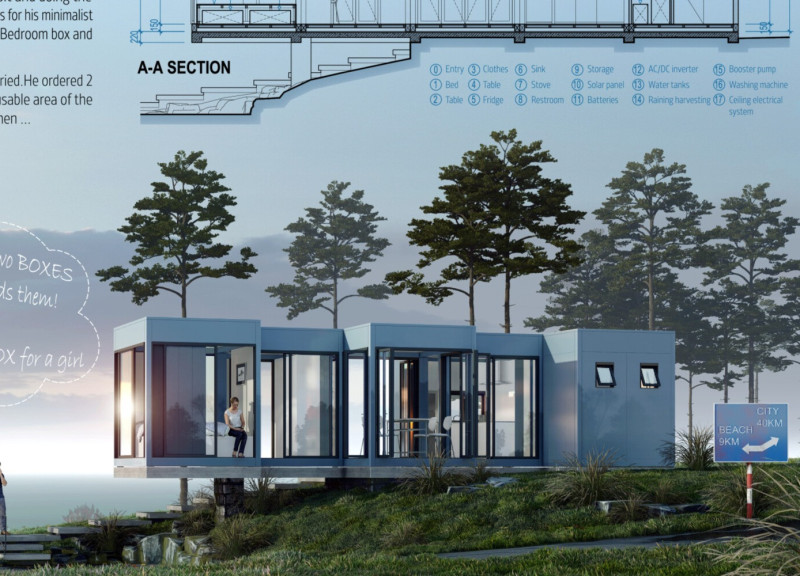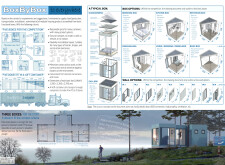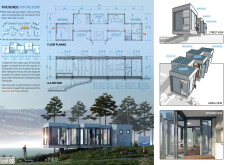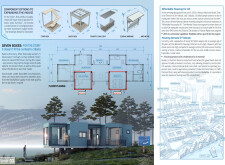5 key facts about this project
### Overview
The BoxByBox modular housing project is developed to address contemporary housing shortages driven by urbanization and economic challenges. It presents a modular system intended to provide flexible, affordable, and sustainable living spaces. This project is particularly relevant for implementation in regions like Vietnam, where rapid urban growth heightens the need for efficient housing solutions.
### Modular Design Approach
The project's core innovation lies in its modular design, consisting of interchangeable functional boxes that can be dynamically combined into various configurations. Each module, measuring 2.2 x 2.2 x 2.7 meters, can serve different purposes including bedrooms, kitchens, and restrooms. This configuration supports individuality by allowing users to tailor their living spaces according to their changing needs. The design strategy fosters adaptability, offering homeowners the option to expand or modify their homes by adding or relocating modules as required.
### Sustainability and Materiality
The BoxByBox project incorporates eco-friendly features such as solar panels and rainwater harvesting systems, contributing to energy efficiency and environmental stewardship. Moreover, the choice of materials emphasizes durability and cost-effectiveness; steel frames ensure structural integrity, while glass panels enhance natural light intake. Insulation materials maintain comfortable indoor climates, and wood finishes add aesthetic warmth to the interiors. Together, these materials and sustainable practices reflect a commitment to minimizing the environmental impact of housing while addressing economic constraints.
### Geographic Adaptability
Acknowledging the specific geographical context, the design is easily adaptable to local building regulations and environmental conditions. This flexibility allows it to cater to both urban and peri-urban development needs, making the modular model suitable for deployment in various scenarios, including temporary housing solutions in disaster-affected areas or remote locations. The design’s scalability is positioned to meet diverse demographic requirements globally, particularly in underserved regions.





















































